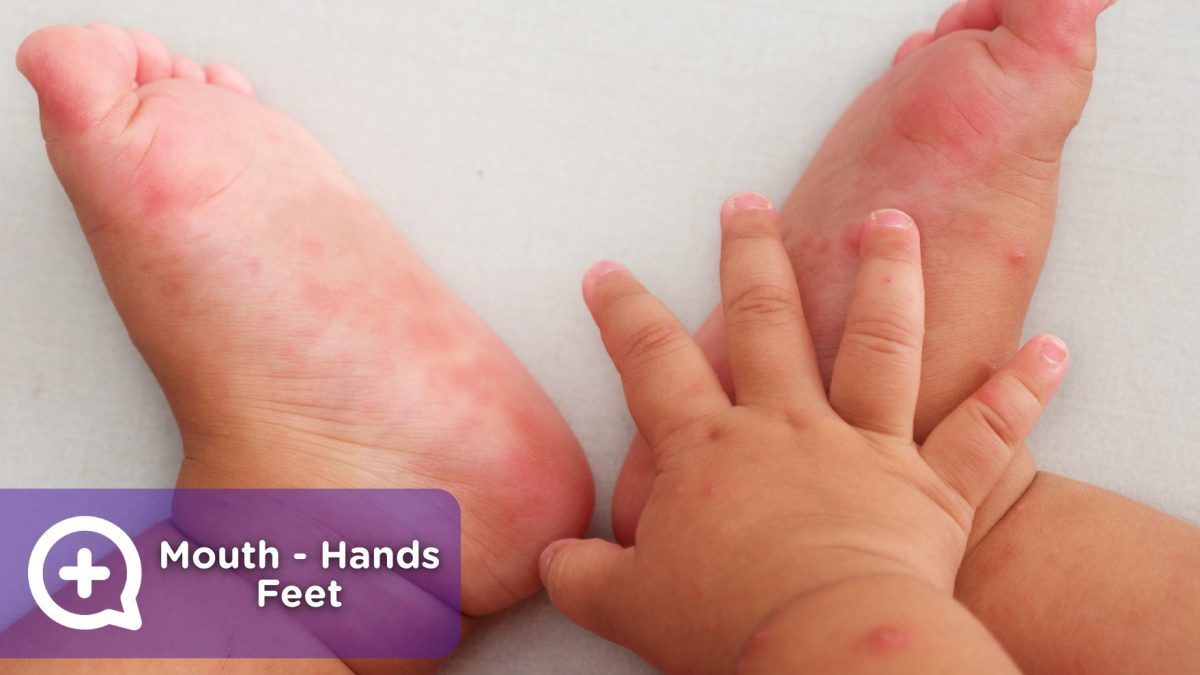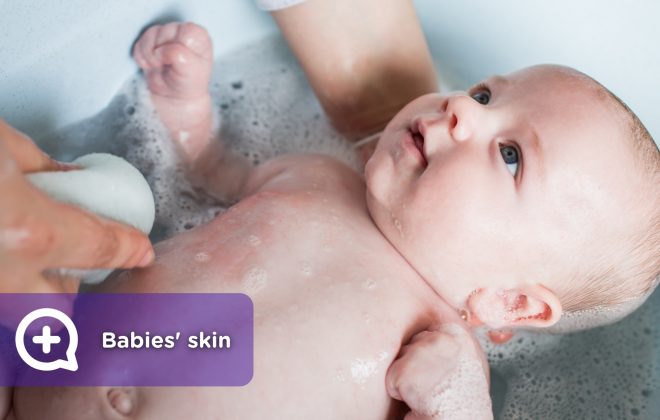You took your baby to the emergency room for a fever and some strange rashes and you have returned home with the diagnosis of “mouth-hand-foot virus”. Now you have questions. What is this disease and why does it have such a strange name? Is it bad?
The medical name of this disease is viral exanthem of mouth-hands-feet. It is an infection caused by a virus with an unpronounceable name (Coxsackie A16) that, in fact, is very common, especially in the warmer months of the year. Very young children, particularly babies and preschoolers are usually affected. It is not a serious disease, but can be very annoying for children.
What are the symptoms
It starts with a common cold: fever, sore throat, discomfort and lack of appetite. But then come the characteristic symptoms, which are what give it its name: rashes and blisters on the inside and around the mouth, on the palms of the hands and on the soles of the feet. Sometimes they can also appear on the genital area.
These rashes are small, flat, red spots, with no scab. They can be accompanied by small blisters, especially in areas where there is friction (for example, in the diaper fold). In the mouth, they can have the shape of sores or small ulcers, which are usually painful.
Is it painful? Is it dangerous?
The mouth-hand-foot virus is very contagious, so it is normal that, if there is more than one child at home, they all catch it at once. However, do not be alarmed; it is a benign infection.
The virus is spread through body fluids: saliva, urine and feces. It feeds on the little people who do not yet have a fully developed immune system (as is the case with children). Although, healthy adults can also be infected.
That’s why, when we have a small infected person at home, we have to take hygiene seriously:
- Wash your hands
- Do not share utensils or toiletries
- Avoid direct contact with saliva
- Carefully clean the surfaces that the child has used, from the sheets on his bed to the toys he has used
When do you go to the emergency room?
The disease usually resolves itself in about a week, so you have to have a little patience. Complications are rare, but we must be alert and take the patient to the emergency room, if necessary:
- Continued fever for 3 days
- Stiff neck
- Drowsiness
- Paralysis or difficulty maintaining strength in legs or arms
How is it treated?
There is no treatment or vaccine for this virus, so only the symptoms are treated: fever and pain. For this, analgesics and antipyretics are used for children, according to the dosage indicated for their age and weight.
In addition, you can ask your pharmacist to recommend a topical product for mouth sores. Remember also that, whenever a child has a fever, we should make sure they drink plenty of fluids. It is better to avoid juices so that the sores do not sting. In contrast, water and dairy are good options.
*Content validated by the mediQuo medical team.



